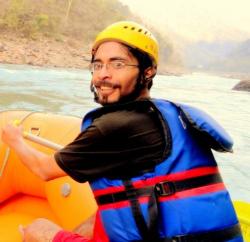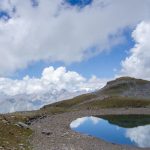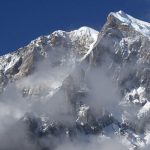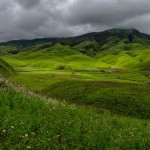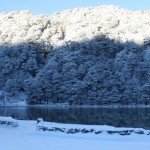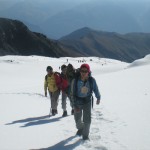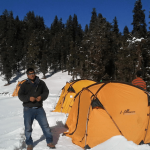Subscribe Now
Get the Latest Updates From Trekking In India BlogAn Overview on Ladakh Peak Climbing Tours
Posted on Sat, 15 Feb 2014 12:43:58 by Swairik Das
The tips of the wings
What explorers seek is to explore new destinations tucked beyond our eyes and reveal the invigorated nature right on our trekking tour tracks in the Indian Himalaya. Reaching out the celestial blue lakes of Kashmir surrounded by lush green meadows, traces of ancient civilizations reflecting from the undulated and barren highland of Ladakh region, exotic ambiance that builds up a quixotic moment in the midst of indigenous culture of Indo-Tibetans in Himachal Pradesh, divine tracks passing through the remote hamlets of the Garhwal Himalaya, evergreen forest exhibiting a vast ecosphere under the shadow of Mt. Kanchenjunga in Sikkim and the camouflaged tracks of North East India are booted in every traveller feet. A furtherance of the tourism in Indian Himalayan region, peak climbing has knocked several adventurers dream. One of the highest trekable summits in the Indian terrain is the Stok Kangri, which is located in the Ladakh region. Some other peak climbing tours in India includes, the popular Sandakphu-Phalut Trek in Darjeeling; Black Peak, Pangarchula Peak, Rudragaira Peak in Garhwal; and Mt. Ladakhi, Friendship peak and Mt. Deo Tibba in Himachal Pradesh.
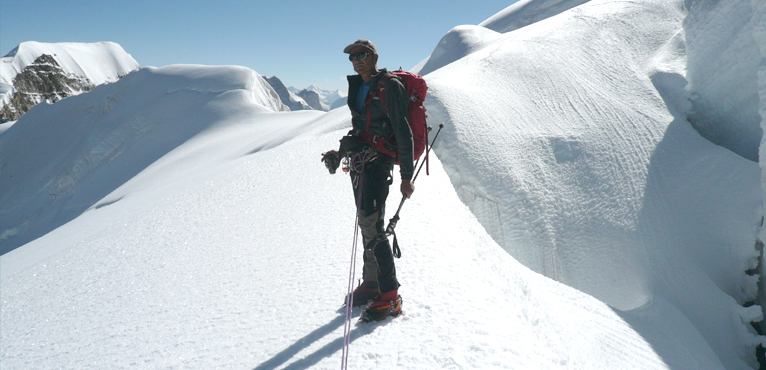
One plucked…
Ladakh that spans the Himalayan and Karakoram mountain ranges and the upper Indus River valley is dotted with several trekking destinations that reach and bring out the remote culture of the Ladakhis. Further beyond the remote civilizations and ancient monasteries those tucked in the steep ridges… Ladakh reveals the lost Iron Age that reflects from the rock arts that exhibit various forms of animal species, human figures and events like festivals and war. Ladakh at one fell swoop is a diorama of ancient gallery and rugged natural beauty. Over the years tourism in Ladakh has been a word of mouth that pulls in travellers – rafters, trekkers, mountaineers, honeybunchers and leisure seekers – from different corners of the world. To add some more adventure activities in Ladakh, tourism in Ladakh has initiated several peaks climbing holidays in Ladakh that passes through the antiquity of Ladakh terrain. Peaks like Stok Kangri, Kang Yatse and Lungser Kangri bustles Ladakh peak climbing tours and pens a remarkable journey.
The tips
The Stok Kangri Trek, which is one of the highest trekable summits in India, is also one of the beautiful and challenging treks in Ladakh region. Once reached to the summit at 6153 meters… it fulfills the trekker’s peak climbing tour in Ladakh from where one can capture the panoramic view of distant peaks like the K2, which is the highest point in the Karakoram and the second highest point in the world, Saser Kangri that dominates the east, Saltoro range on the lap of Karakoram and Zanskar range to the south.
En route the Hemis National Park followed by Markha Valley, the Kang Yatse Trek is another spectacular journey that ascends to a trekable height between 6000 to 6200 meters. The lofty Kang Yatse peak stands at an altitude of 6400 meters. The strenuous trail offers the stunning vista of the Stok Kangri, Zanskar and Karakoram Range. The climb passes through several mountain passes like Ganda La and Kongmaru La to the North East ridge and then directly up the steep snow face.
Climbing to a lofty altitude above 6500 meters makes the Lungser Kangri Trek another highest trekable summit in India. Lungsher Kangri peak stands at a height of 6666 meters and the journey to the summit passes through high mountain passes like the Tanglang La followed by Kyama La and Yalung Nyau La.
Reaching the summit of Tannak Peak at an altitude of 5948 meters requires some prior technical experience. The tracks winds from Kargil and turns up to the summit via Sanku and Pan.
The Bobang Peak expedition is also another thrilling journey from Leh to the Bobang Peak summit at 5971 meters. The trail passes through several high altitude passes, remote villages, streams and lakes. Moreover, expeditions like climbing Mt. Pinnacle at 6955 meters and Mt. White Needle at 6420 meters pulls in mountaineers from distant parts of the world.
Recently, Ladakh tourism has opened 200 peaks for mountaineers including the Nun at 7135 meters, Kun at 7077 meters, Yan at 6230 meters, Chong Kumdam I and II at 7069 and 7005 meters respectively, Cloud Peak at 7416 meters, Lookout Peak at 6252 meters and Momstang Peak I and II at 7526 and 7016 meters and the chain of Z (peaks 1, 2, 3 and 8) making Ladakh peak climbing tours more panoptic.
Winging to flashback
Several peak climbing attempts were made in the past to climb points like Saser Kangri I, II (East and West), III and IV in the Karakoram, which is beyond the Ladakh terrain. It requires some serious acclimatization and fitness to head for such peak climbing holidays in Ladakh and beyond. Going back to the past… from the start to the mid of 20th century, from 1909 – 1970, after several attempts were made by European explorers like T. G. Longstaff, along with Arthur Neve and A. M. Slingsby and other groups over the decades to climb Saser Kangri from the western side, the Nubra Valley and from the eastern side that faces the Tibetan plateau… it was first succeeded by the members of the Indo-Tibetan Border Police in the year 1973 en route the upper Shyok Valley and the North Shukpa Kunchang Glacier. Later it was followed by another Japanese team in 1984 that ascended the Saser Kangri II West and thereafter in 1986 attempts were made to climb up Saser Kangri III by an Indo-Tibetan Border Police and was successful. In 1987, another team successfully climbed from the western side and later Saser Kangri II East was first climbed by Mark Richey, Steve Swenson and Freddie Wilkinson on August 24, 2011.
“For Peak climbing expedition in Ladakh Himalaya region call at +91-9212553109 /9810352536”




